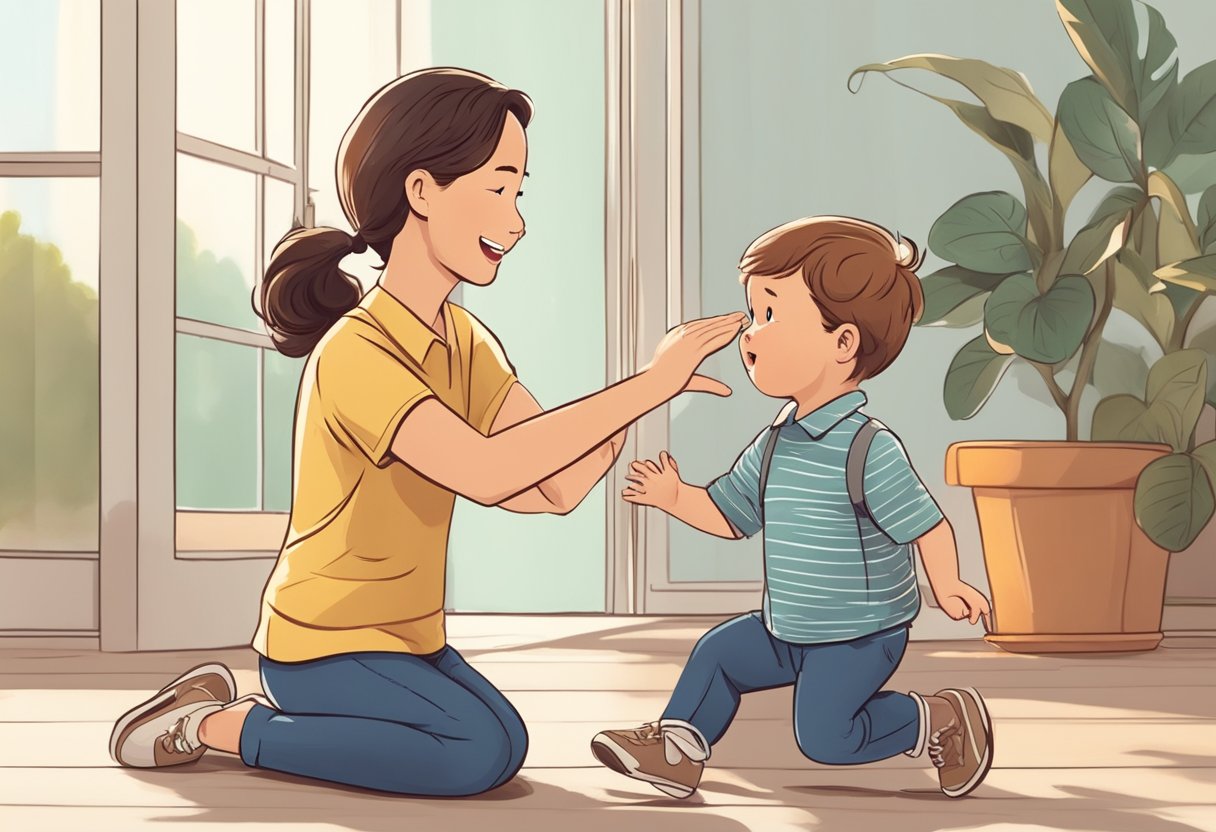Body-positive parenting is a movement that encourages parents to foster a healthy relationship between their children and their bodies. It emphasizes the importance of accepting and loving one’s body, regardless of shape, size, or ability. The goal of body-positive parenting is to help children develop a positive body image and a healthy relationship with food and exercise.
In a world where unrealistic beauty standards are constantly reinforced by media and society, body-positive parenting is more important than ever. Children are exposed to images of “perfect” bodies at a young age, and this can lead to negative body image, low self-esteem, and even eating disorders. Body-positive parenting aims to counteract these harmful messages by teaching children to appreciate their bodies for what they can do, rather than what they look like.
Foundations of Body-Positive Parenting
Body-positive parenting is a parenting approach that promotes positive body image and self-esteem in children. Here are some key foundations of body-positive parenting:
- Focus on health, not weight: Instead of focusing on weight or appearance, body-positive parents prioritize health and well-being. They encourage their children to eat a balanced diet, engage in physical activity, and get enough sleep.
- Model positive behavior: Children learn from their parent’s behavior, so body-positive parents model healthy habits and positive body image. They avoid negative self-talk and criticism of their bodies, and they don’t make negative comments about other people’s bodies.
- Encourage self-acceptance: Body-positive parents help their children develop a positive relationship with their bodies by encouraging self-acceptance and self-love. They teach their children to appreciate their bodies for what they can do, rather than how they look.
- Avoid body shaming: Body-positive parents avoid body shaming, whether it’s directed at their children or others. They don’t make negative comments about their children’s bodies or weight, and they don’t make negative comments about other people’s bodies or weight.
- Teach media literacy: Body-positive parents teach their children to be critical of media messages that promote unrealistic beauty standards. They help their children understand that the images they see in the media are often heavily edited and don’t represent real people.
Overall, body-positive parenting is about promoting a healthy relationship with one’s body and encouraging self-love and acceptance. By focusing on health, modeling positive behavior, encouraging self-acceptance, avoiding body shaming, and teaching media literacy, parents can help their children develop a positive body image and self-esteem.
Implementing Body Positivity at Home
Body positivity is an important aspect of parenting that can help children develop a healthy relationship with their bodies. Here are some ways to implement body positivity at home:
Creating a Supportive Environment
Creating a supportive environment is essential for promoting body positivity. Parents can create a safe space for their children to express themselves without fear of judgment. This can be done by avoiding negative comments about their child’s body, as well as their own.
Parents can also promote body positivity by surrounding their children with positive body images. This can include books, movies, and TV shows that feature diverse body types and sizes. Additionally, parents can encourage their children to follow social media accounts that promote body positivity.
Encouraging Self-Acceptance
Encouraging self-acceptance is another important aspect of body positivity. Parents can help their children develop a positive self-image by teaching them to focus on their strengths and accomplishments rather than their appearance.
Additionally, they can encourage children to practice positive self-talk and activities like yoga, meditation, or spending time in nature to promote self-care and self-love. Discover how affirmations can further empower your child’s journey with the Charm Words playlist.
Promoting Healthy Habits
Promoting healthy habits is an important part of body positivity. Parents can encourage their children to engage in physical activity that they enjoy, such as dancing, swimming, or playing sports. Additionally, parents can promote healthy eating habits by providing their children with nutritious meals and snacks.
Parents can also teach their children about the importance of rest. This can include encouraging them to get enough sleep and to take breaks when they are feeling overwhelmed.
By implementing these strategies, parents can promote body positivity and help their children develop a healthy relationship with their bodies.
Challenges and Solutions
Addressing Media Influence
One of the biggest challenges of body-positive parenting is the negative influence of media. Children are constantly exposed to unrealistic beauty standards and messages that promote a narrow definition of beauty. Parents can address this by limiting exposure to media that promotes negative body image and by actively seeking out media that promotes body positivity.
Parents can also encourage critical thinking by discussing media messages with their children. For example, they can point out unrealistic beauty standards in advertisements and discuss how they can be harmful. This helps children develop media literacy skills and become more aware of the impact that media can have on their body image.
Handling Negative External Comments
Another challenge of body-positive parenting is dealing with negative comments from others. Children may be teased or bullied for their appearance, or they may receive negative comments from well-meaning family members or friends. Parents can handle this by teaching their children how to respond to negative comments and by modeling positive self-talk.
Parents can also create a supportive environment by surrounding their children with positive role models and by building a community of supportive friends and family members. This helps children feel more confident and resilient in the face of negative comments.
Fostering Resilience
Finally, fostering resilience is key to promoting body positivity in children. Resilient children are better able to handle challenges and setbacks, and they are more likely to have a positive body image. Parents can foster resilience by teaching their children coping skills, such as mindfulness and positive self-talk, and by encouraging them to pursue their passions and interests.
Parents can also help their children develop a growth mindset by emphasizing the importance of effort and perseverance. This helps children see challenges as opportunities for growth and development, rather than as obstacles to be avoided. By fostering resilience, parents can help their children develop a positive body image and a healthy sense of self-esteem.
Community and Advocacy
Building a Body-Positive Community
Building a supportive and inclusive community is an essential part of body-positive parenting. Parents can connect with other like-minded individuals through social media groups, local organizations, and parenting classes. These communities provide a safe space for parents to share their experiences, ask for advice, and offer support to one another.
In addition to online communities, parents can create their body-positive support groups in their local area. These groups can provide a space for parents and their children to connect with others who share their values and beliefs. Creating a body-positive community can help parents feel less alone in their parenting journey and provide a supportive environment for their children to grow and thrive.
Advocating for Inclusivity in Schools
Advocating for inclusivity in schools is another important aspect of body-positive parenting. Parents can work with their child’s school to ensure that all students feel valued and included, regardless of their body size or shape. This can include advocating for policies that promote body positivity, such as banning weight-based bullying and promoting inclusive physical education classes.
Parents can also work with their child’s school to ensure that all students can access healthy food options and physical activity opportunities. This can include advocating for healthier school lunches and ensuring that all students have access to safe and inclusive physical activity programs.
Parents can help create a more supportive and inclusive environment for all students by advocating for inclusivity in schools. This can help promote positive body image and self-esteem, and help prevent the negative effects of weight-based bullying.










